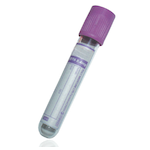Suitable Specimen Types
- Serum
- EDTA Plasma
- Li Hep Plasma
Specimen Transport
UsualSample Processing in Laboratory
Centrifuge and place in toxicology box in cold room.Sample Preparation
CentrifugeTurnaround Time
3 working daysSample Stability
4 ºCImipramine and Desipramine
General Information
Imipramine (Tofranil) is the prototype of the tricyclic antidepressant drugs, which now exceed 10 in number and have been among the most frequently used agents for the treatment of depression. They bear a close chemical relationship to the phenothiazines (imipramine is a promazine analogue) and yet have certain distinct pharmacological effects.
Adverse reactions to imipramine therapy include orthostatic hypotension, paresthesias, dry mouth, blurred vision, confusion, disorientation, insomnia, agranulocytosis and paralytic ileus. Fatal hepatic necrosis has been reported. Imipramine toxicity is characterised by hyperactivity, seizures, respiratory depression, hypertension, cardiac arrhythmias, hyperpyrexia, tachycardia, urinary retention, coma, circulatory collapse and death.
Patient Preparation
For TDM, sample should be taken prior to dose. If toxicity is suspected, take sample at earliest opportunity
Notes
Please avoid use of gel seperator tubes.
Please note this assay is not currently UKAS accredited
Reference Range
Therapeutic concentrations of imipramine range between 50 to 150 ug/L, with the total sum of imipramine and desipramine between 150 and 300 ug/L.
Specifications
- EQA Scheme?: Yes
- EQA Status: LGC QUARTZ, LGC CLIN TOX
